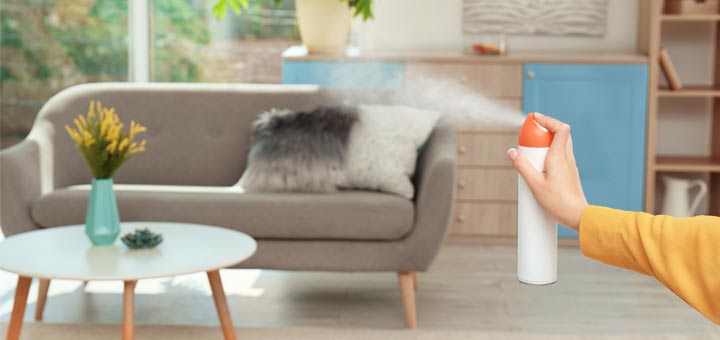The air freshener market is an enormous beast that seduces you with its enchanting aromas. From candles and plug-in devices to sprays and gels, air fresheners plague you everywhere you go. Businesses have sprays in restrooms, friends have freshening candles in their living rooms, and you may even have plug-ins in your house. Some scents are attractive and others aren’t, but no matter what the scent of the air freshener is, it pollutes your indoor air.
Air Fresheners At A Glance
They seem nice to the untrained nose, but we’re about to drop some knowledge on you. Air fresheners are one of the primary sources of indoor air pollution because they emit or cause the formation of substances that have been linked to cancer, neurotoxicity, and endocrine disruption. It’s unfortunate because companies can label their air fresheners with “all-natural” or “green” words to attract customers, despite the fact that they are far from natural. Fragrances are trademarked blends, and companies are not required to put the ingredients in those blends on ingredient labels.
What Is Indoor Air Pollution?
Yes, the air in your home is not as safe as you thought. It may not be as poor as the air outside, which is replete with environmental pollutants and airborne toxins. While the air in your home may not be as healthy as you think it is, you have complete control over how fresh your indoor air is. Air fresheners, cooking oils, cleaning products, and building materials dictate the quality of indoor air. If you use air fresheners, a quick and easy way to improve indoor air quality is by throwing them out. Get them out of your house!
When you don’t have the constant presence of fragrances in your house, you may notice that you experience better respiratory function. The fragrances from air freshener gels, sprays, or plug-ins contain contain the following harmful pollutants:
- Parabens: which can increase the risk of breast cancer.
- Toluene: which scientists have linked to reproductive and developmental toxicity.
- 1,4-Diclorobenzene (1,4 DB): a volatile organic compound that can negatively affect lung function, especially in people with asthma or respiratory illnesses.
- Xylene: linked to symptoms such as headaches, depression, dizziness, short-term memory impairment, and central nervous system depression.
- d-Limonene: is a sensitizer, which can increase the odds of future allergic reactions. It may also irritate the eyes and skin.
- Phthalates: linked to damaging the female reproductive system and increasing the risk of birth defects. It may also contribute to endocrine disruption.
- Benzene: a harmful carcinogen that is toxic to reproductive and developmental health.
Making Your Own Air Freshener
You don’t need to subject your respiratory system to harmful fragrances that contain volatile compounds because it’s easy to make your own air freshener. It sounds difficult, but it’s so much easier than you think. All you need is some baking soda, the essential oil of your choice, a glass jar, and a cupcake liner. Perfectly naturally and wonderfully aromatic. Your house will smell as fragrant as ever without harming your air quality.
DIY Air Freshener
Ingredients:
- 1/4 cup baking soda
- 10 drops eucalyptus essential oil (or whatever essential oil you prefer)
- 4 ounce mason jar
- Cupcake liner
- Skewer
Instructions:
- Add the baking soda to the mason jar and mix in the essential oil. Give it a quick mix.
- Place a cupcake liner over the jar and place a rubber band around the jar.
- Screw the lid down over the cupcake liner and use a skewer to poke a few holes in the cupcake liner.
- You’re all set and ready to smell delicious!

Vincent Stevens is the senior content writer at Dherbs. As a fitness and health and wellness enthusiast, he enjoys covering a variety of topics, including the latest health, fitness, beauty, and lifestyle trends. His goal is to inform people of different ways they can improve their overall health, which aligns with Dherbs’ core values. He received his bachelor’s degree in creative writing from the University of Redlands, graduating summa cum laude. He lives in Los Angeles, CA.






















